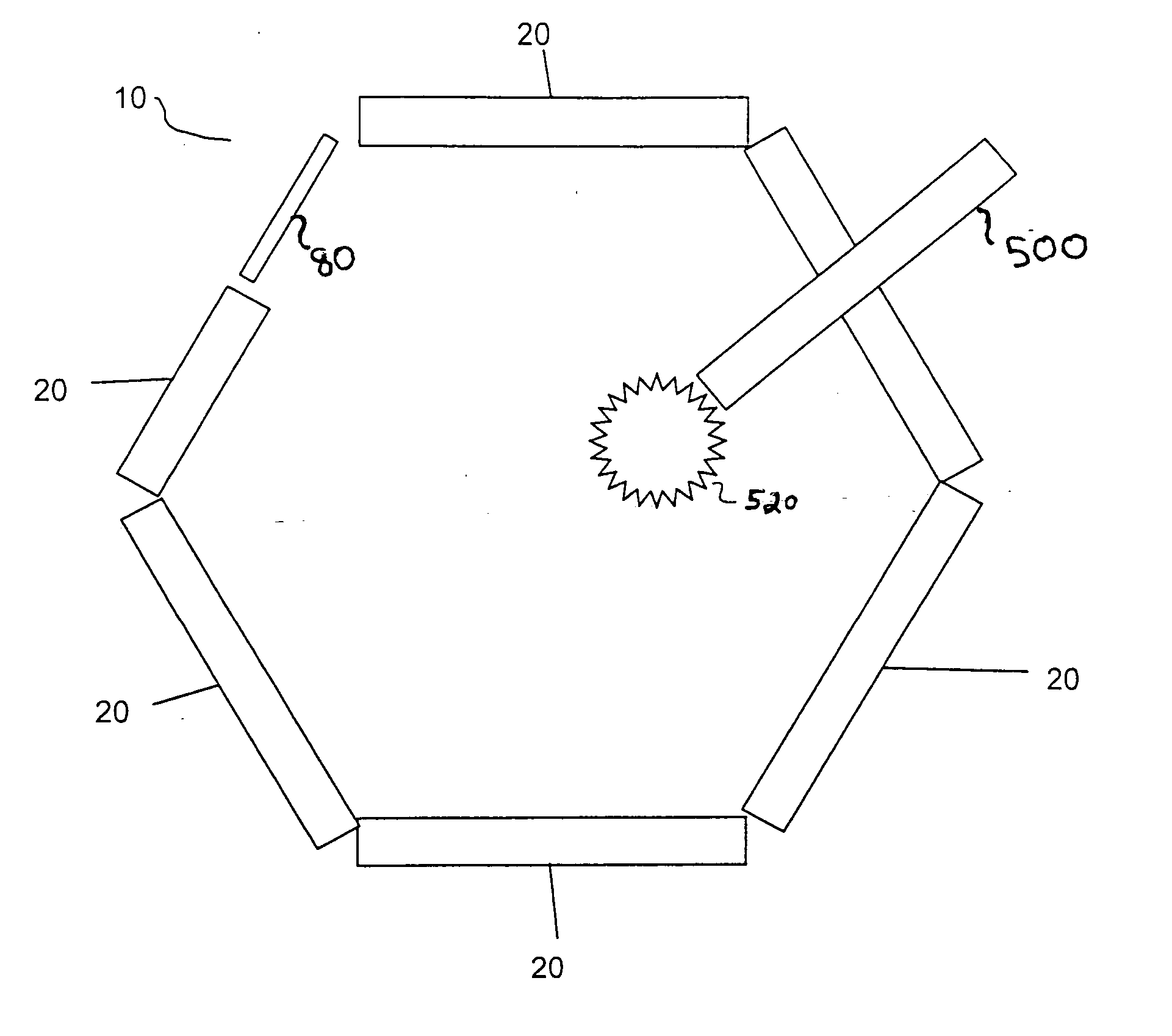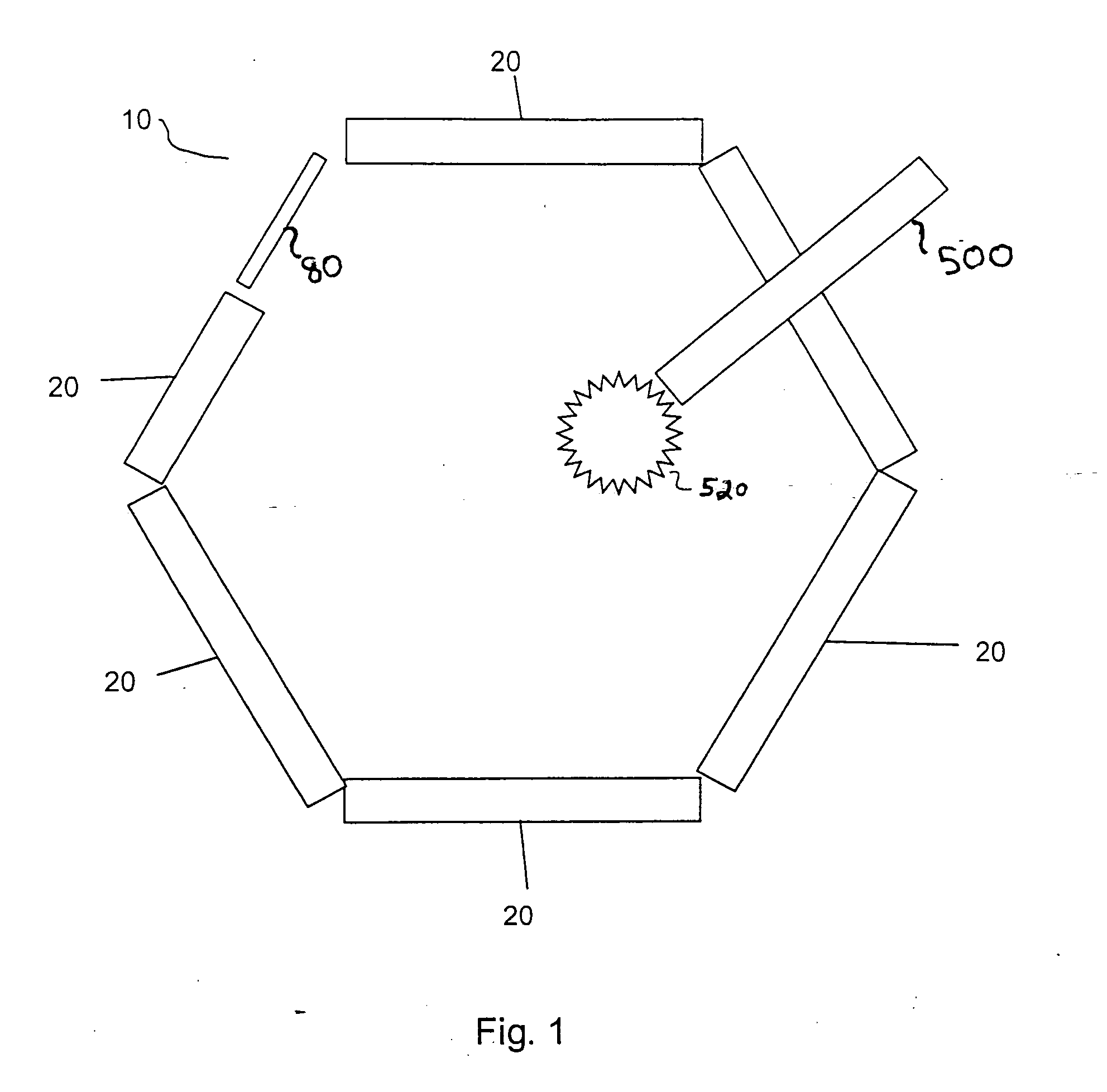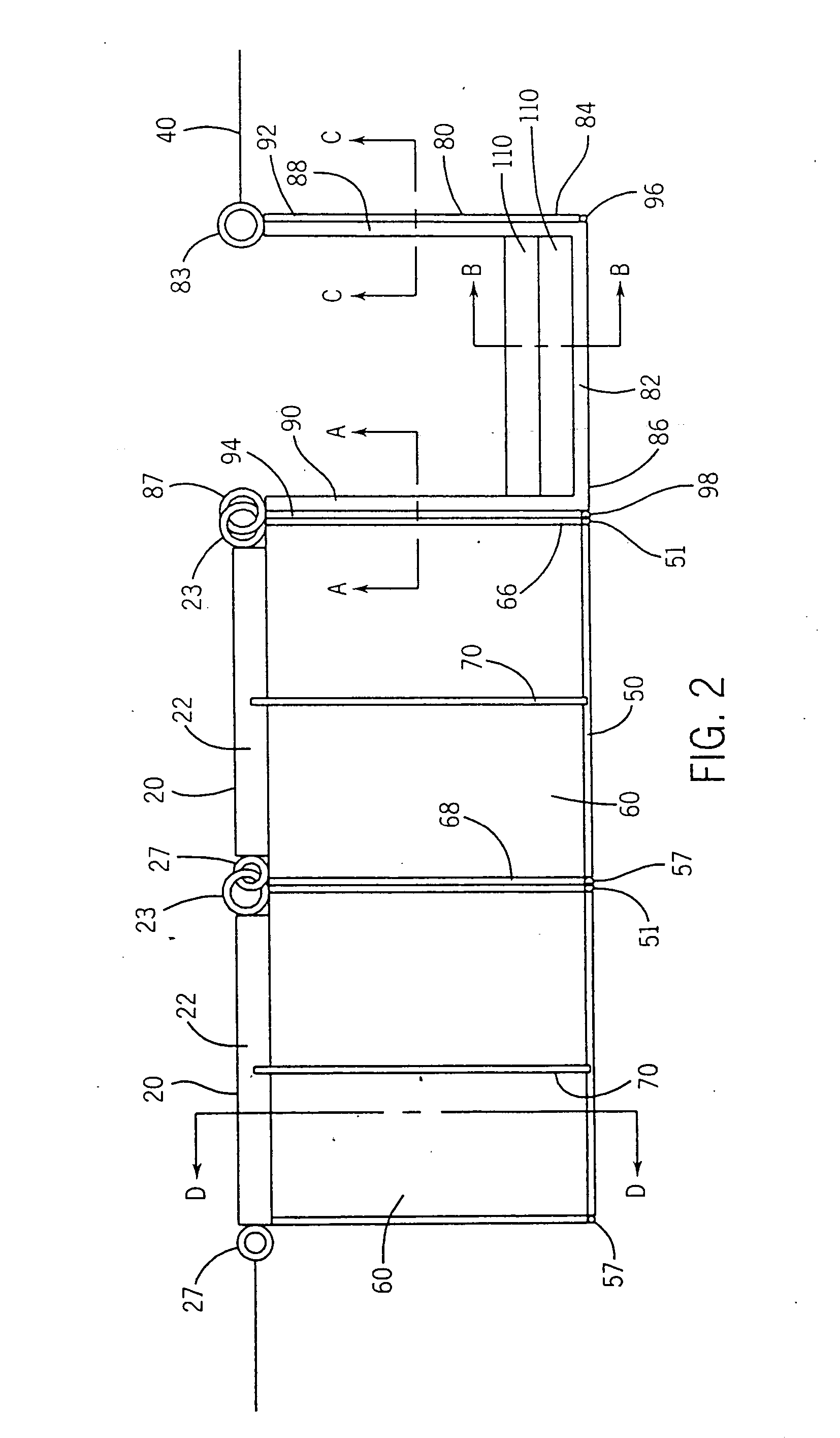Method and system for building up land in a water-covered or water-surrounded area and land body formed by use of same
a technology of building up land and water-covered areas, applied in water cleaning, land reclamation, soil-shifting machines/dredgers, etc., can solve the problems of increasing erosion, unbalanced erosion, and killing plants, and achieves precise control and less risk of fouling the device
- Summary
- Abstract
- Description
- Claims
- Application Information
AI Technical Summary
Benefits of technology
Problems solved by technology
Method used
Image
Examples
Embodiment Construction
[0045] The inventor now moves to a detailed description of an embodiment of the method of the invention, which is shown in the drawings, where like parts are labeled with like reference numerals. FIG. 6, is a flow chart depicting the steps that are involved in the embodiment depicted therein.
[0046] 1. Select a site where the method will be practiced. The site is typically a coastal marsh or wetland that has been eroded through a process that includes salt-water intrusion. Islands that have been degraded due to erosion can also be selected.
[0047] 2. Measure the dimensions of the site including the depth of the water contained at various locations around the site.
[0048] 3. Erect a sediment-containment structure in the manner described below.
[0049] 4. Introduce sediment into the substantially closed shape formed by the sediment-containment structure.
Additionally, board or other blocking means can be added to a wasteweir segment as the height of sediment buildup increases.
[0050] ...
PUM
 Login to View More
Login to View More Abstract
Description
Claims
Application Information
 Login to View More
Login to View More - R&D
- Intellectual Property
- Life Sciences
- Materials
- Tech Scout
- Unparalleled Data Quality
- Higher Quality Content
- 60% Fewer Hallucinations
Browse by: Latest US Patents, China's latest patents, Technical Efficacy Thesaurus, Application Domain, Technology Topic, Popular Technical Reports.
© 2025 PatSnap. All rights reserved.Legal|Privacy policy|Modern Slavery Act Transparency Statement|Sitemap|About US| Contact US: help@patsnap.com



